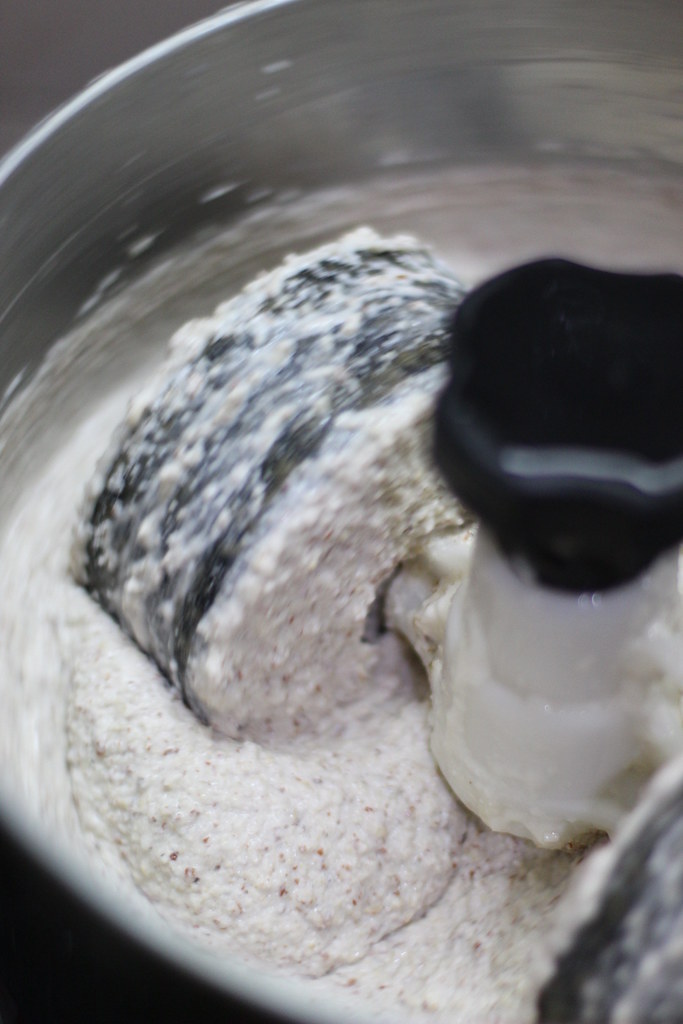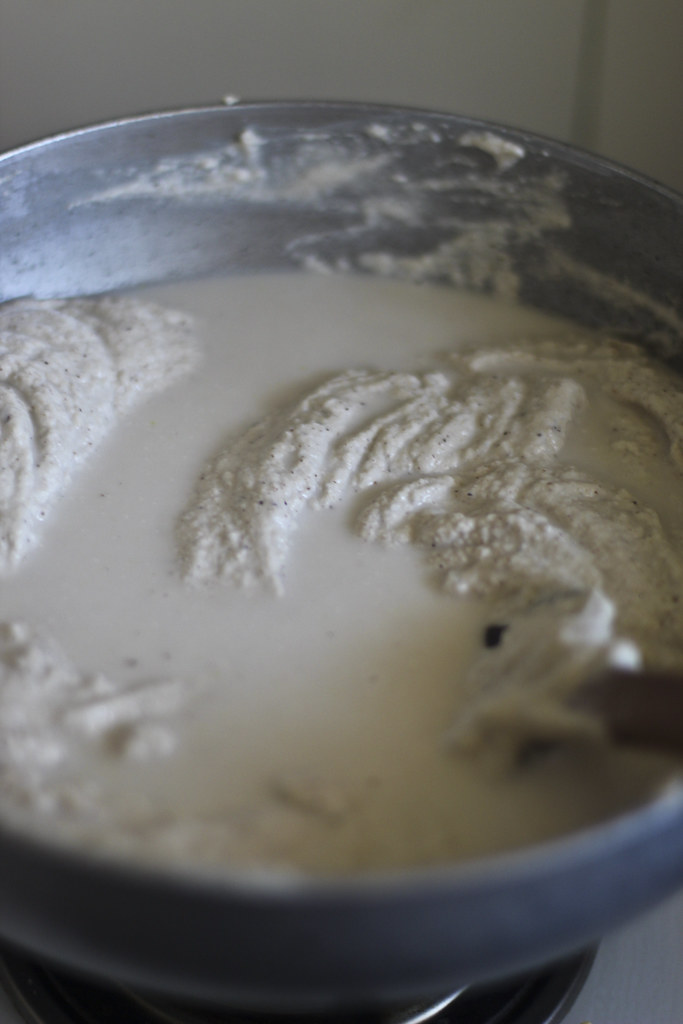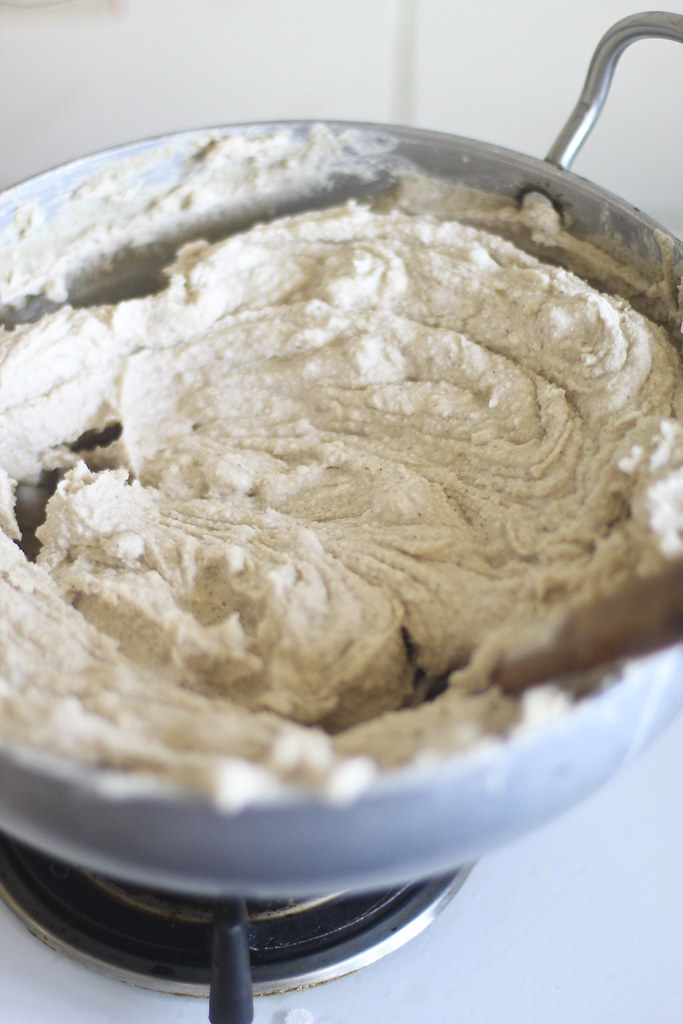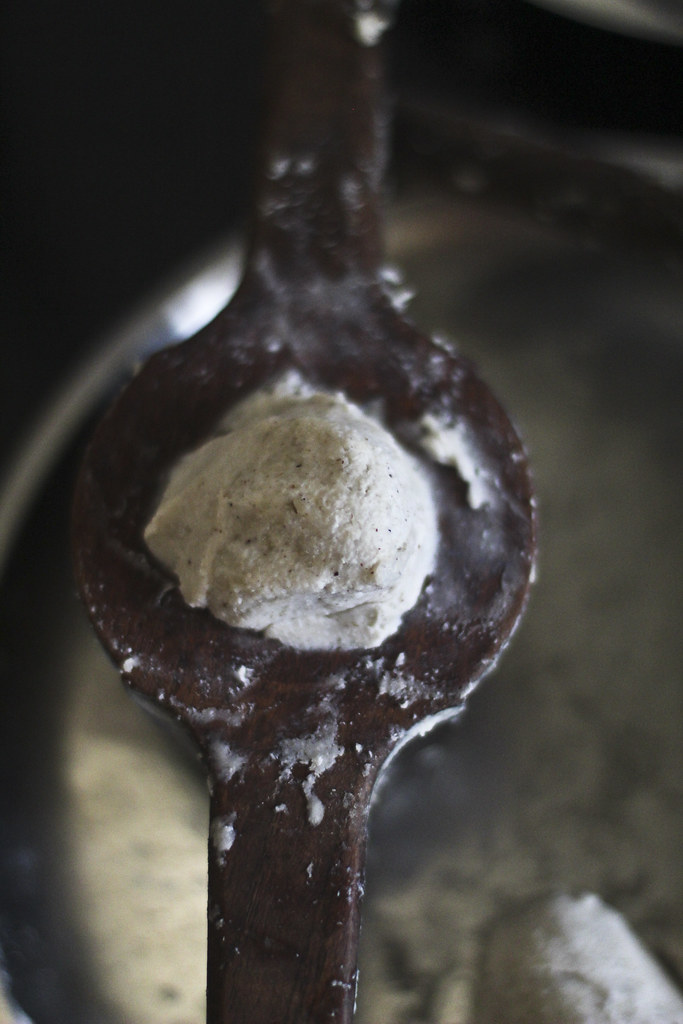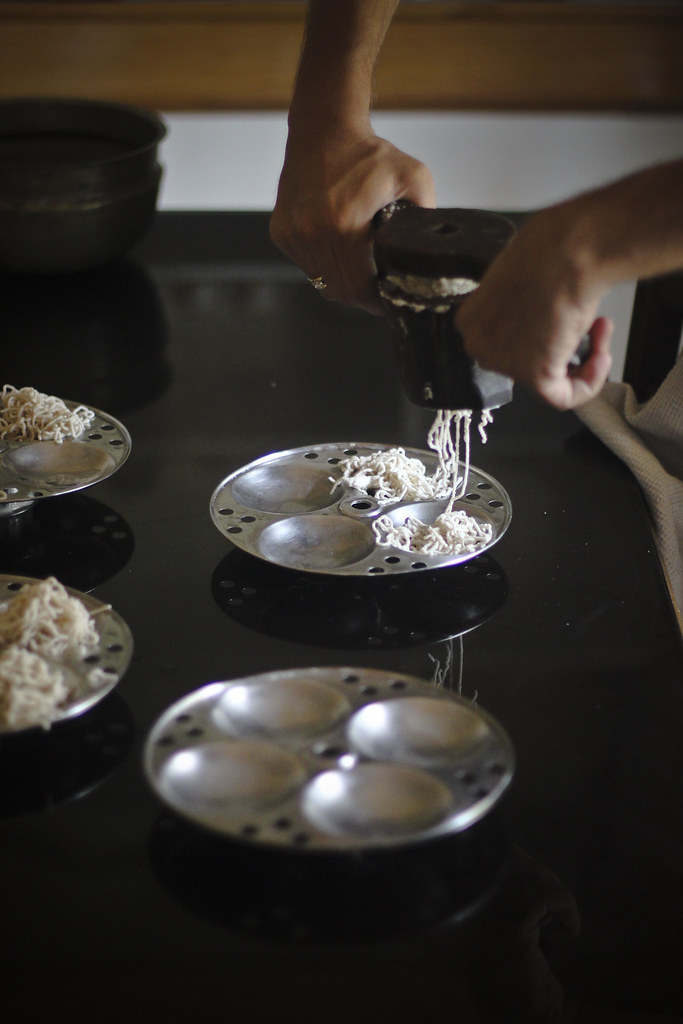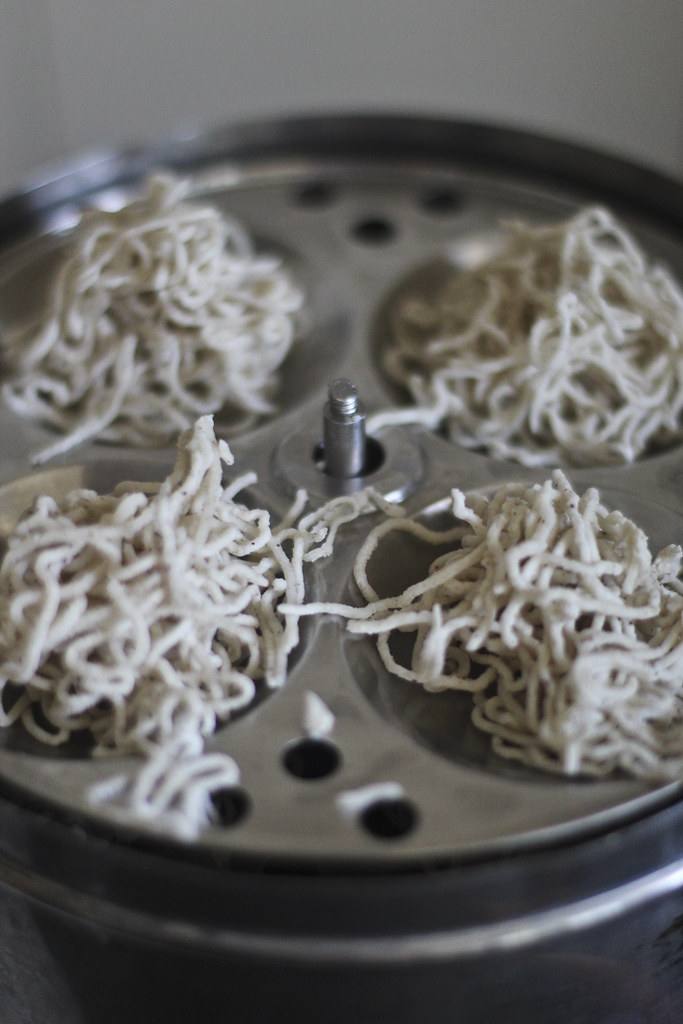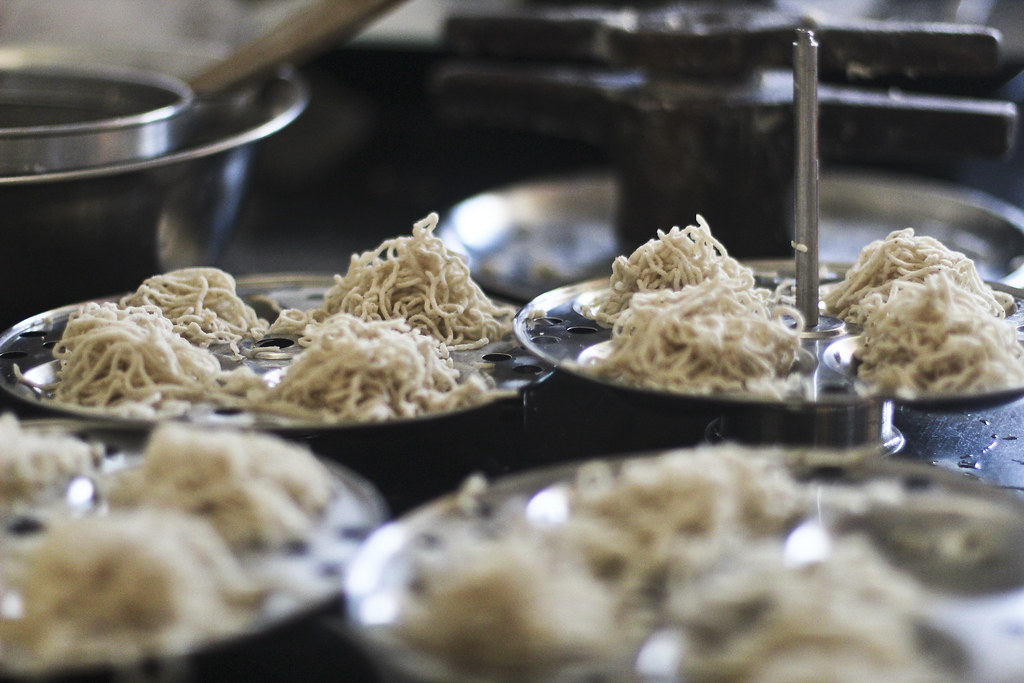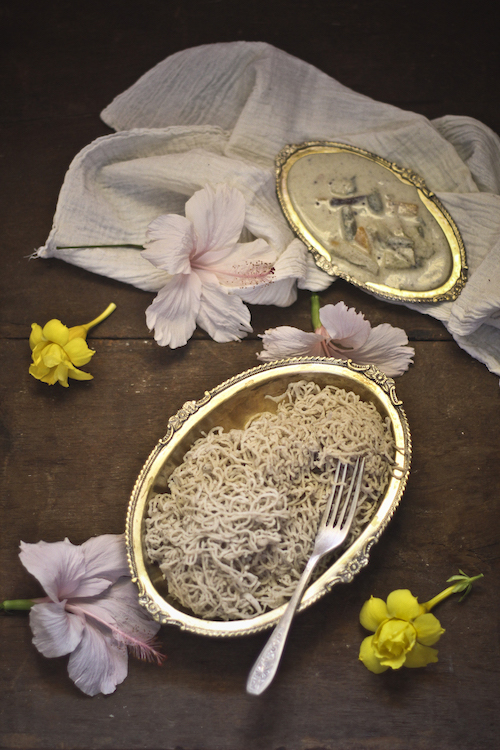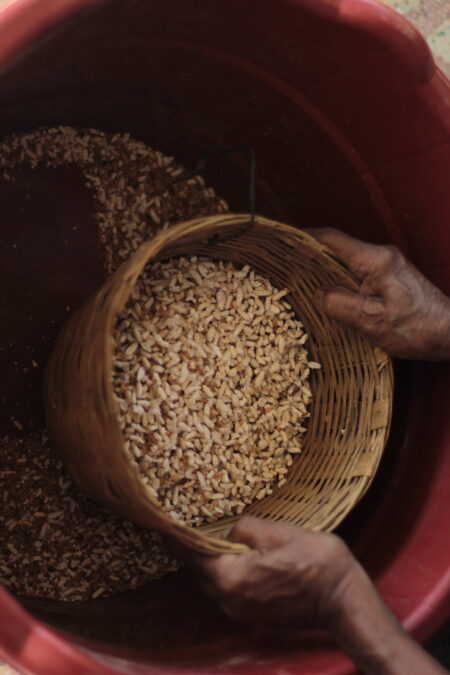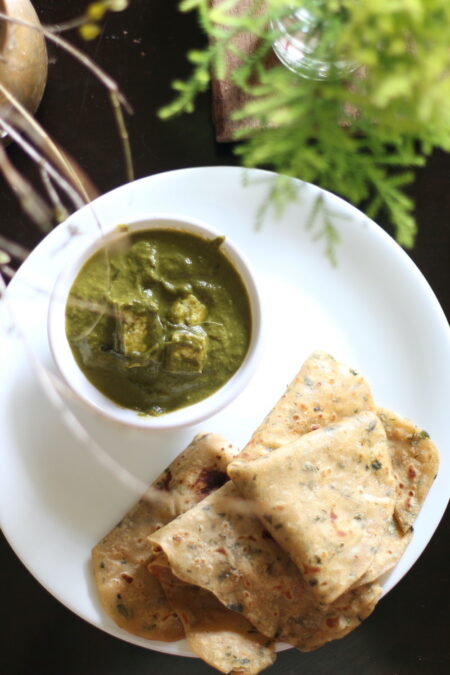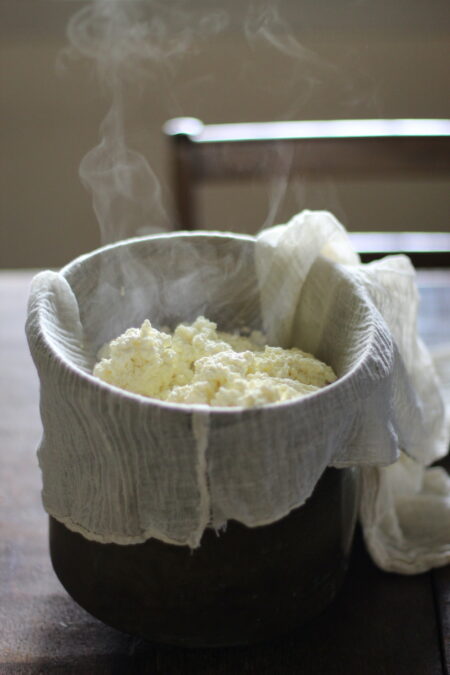Kusublakki Ottu Shyavige, an epitome of labour and love! This has to be one of the most graceful and luscious breakfast recipes ever invented by the Southern cooks. Piles of noodles streaming out of a Shyavige press in the wee hours with the incense of fresh vegetables bubbling in a pool of Coconut milk on the other side of the kitchen, is quite desirable isn’t it? I’ve been totally flounced by these flavours and I could eat these strings of thin rice noodles almost everyday without bellyaching.
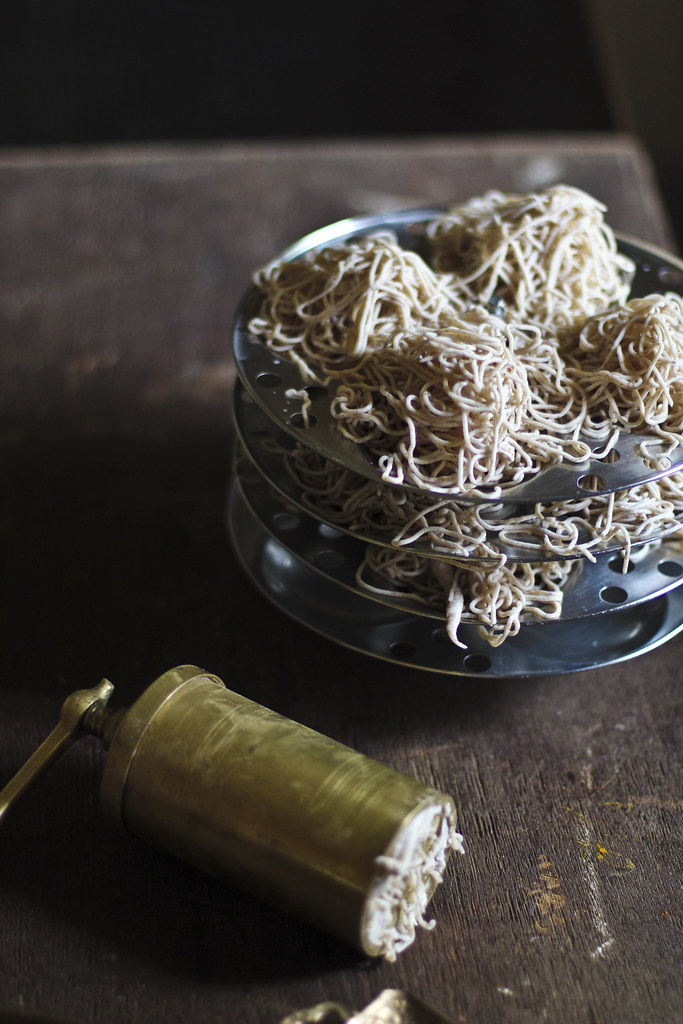

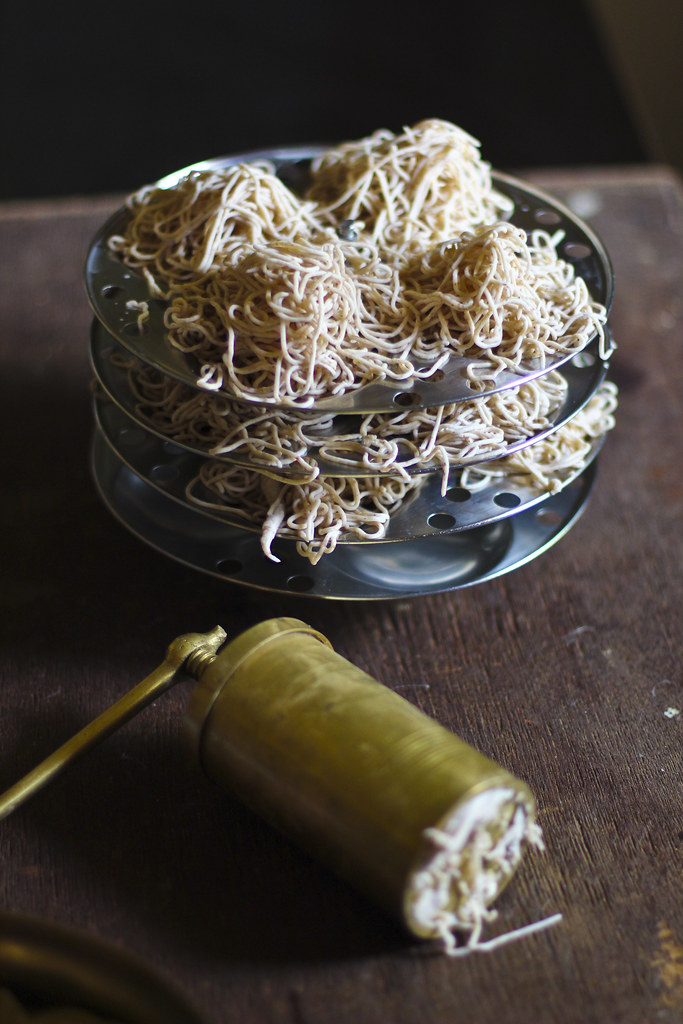

Steaming seals the flavours and nutrients of the ingredients. Slow – cooked idiyappams/ottu shyavige or idlis or kadabus are heavily nutritious by virtue of the steam – cooking process. In the bygone eras of traditional cooking, muslin cloth materials and a wide range of leaves were used along with the kalai coated brass steamers for making steamy hot thindis or breakfast recipes as we call them now!
Women, after a bath and the morning rituals, would just be seen calm and gazing at the wood fire in the Adige kone, wearing neatly draped cotton/ silk sarees, combed hair tied up to a bun and perched patiently, working so hard in the Adige kone which used to be completely steamy and smoky.
All this and more comes with a soothing melody of clinking bangles and clanking brass and copper thambala, koda and soutu. How I wish the human body had the powers to record and replay all the visual memories. For now this is all I have to show you. This is the Ottu Shyavige from the Kusublakki Akki, a native parboiled variety of Karnataka, that was washed and soaked the previous night.
Sometimes when I sit to contemplate on the breakfast/brunch prep for Sunday mornings, the first thing that comes to my mind is the Kusubalakki Shyavige and the lovely Kerala Vegetable Stew. It has to be one of the most satisfying meals ever in South Indian Cooking.
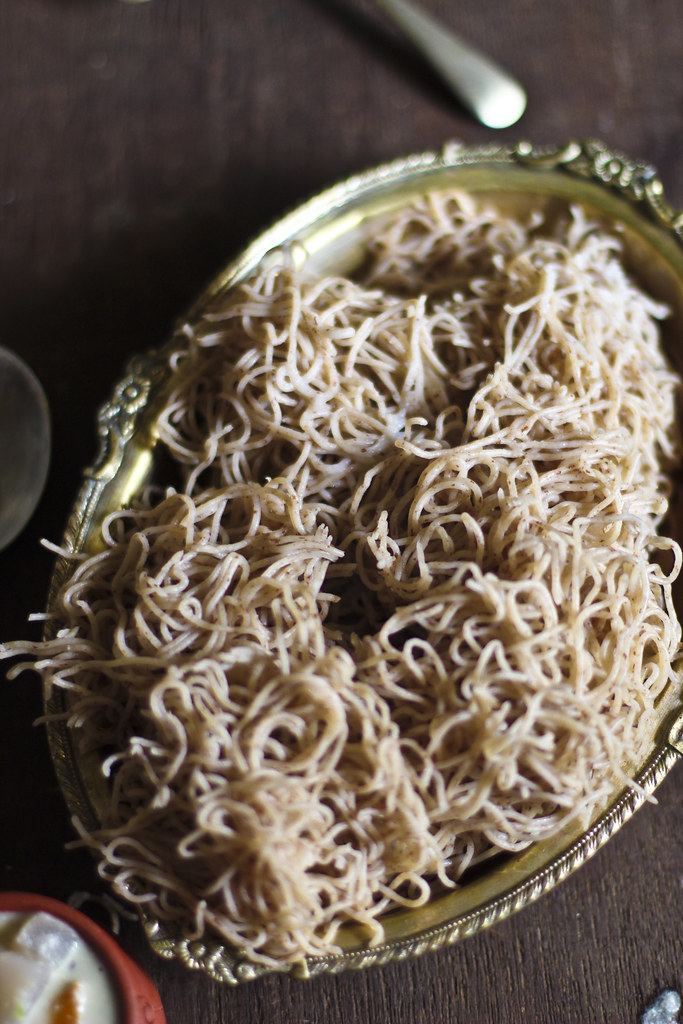
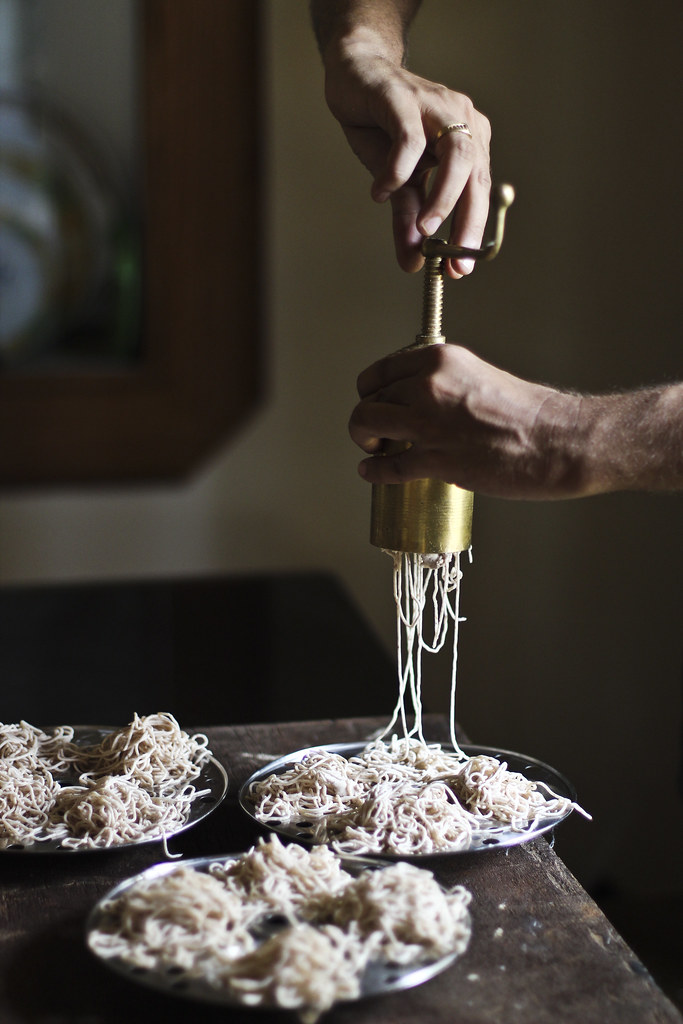


My little one just can’t contain his excitement to savour this breakfast prep. He’s always sticking around waiting to get hold of the first batch of piping hot Ottu Shyavige, from where the marathon binge session begins. Its just rice noodles anyway, is what I think.
But I love how he looks at the string hoppers with so much adoration. I have already written the recipe for the quicker version of Ottu Shyavige, string Hoppers previously made from rice flour, well, quicker, or less shuttles I’d rather say, though not with the step by step pictorial.
The recipe that I’ll be sharing here is another way of making Ottu Shyavige, which makes it much softer and flavourful. I added some coconut too. This recipe brings out a lot of flavours of the rice used alone. In case you’d love using an aromatic rice, then this recipe is definitely you need to choose.



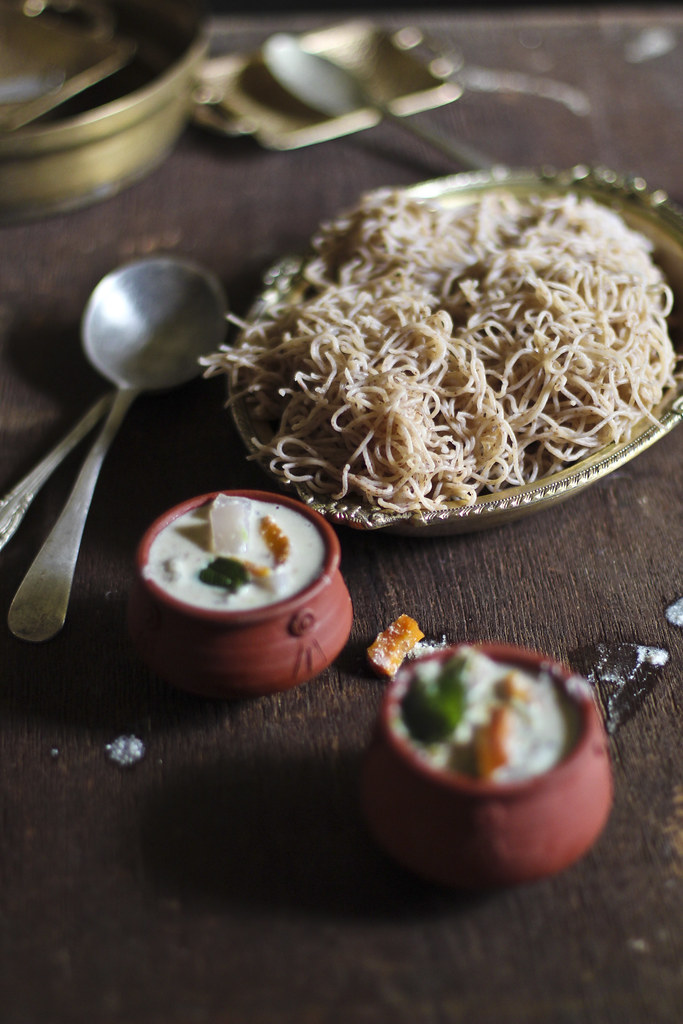
I’ve made these iddiyappams with unpolished kusubalakki rice that was washed and soaked previous night. The next day, I ground the rice with some fresh coconut and made a batter from these ingredients and then kick started with the process of making the Shyavige. If the grinding is done in a stone grinder even better.
I love savouring these string hoppers with the Kerala Vegetable Stew that I happened to learn from a chef in Sterling Wayanad, Kerala.
Idiyappams are best when served with both sweetened coconut milk and vegetable stew. A versatile recipe, that can be even used to make upma or chitranna or even sweet halwas and payasams.
Kusubalakki Ottu Shyavige
- Ottu Shyavige/String Hoppers/Idiyappams can be served with a wide range of accompaniments including the poppy – seed / gasgase payasam, vegetable stew and the coconut milk.
Ingredients
- 2 cups – Kusubalakki (Idli Rice)
- 1 cup – Coconut – (grated/you can also use the milk extracted from this quanity)
- 1 cup – Water – For grinding
- 1 tsp – Salt
- Idiyappam Press
- Steamer/Idli Stand
Directions
- Soak the rice in water the previous night you would be making the Shyavige.
- Drain the water and grind the rice with grated coconut, salt and some water til you get a smooth creamy texture. Use a grinder preferably. You can as well use mixie if you have a small family.
- Take a wok and plop your rice + coconut mixture into the wok and start heating the mixture on a low heat. Use a wooden ladle or a stick to fold the mixture in. Let the mixture cook for about ten good minutes or till you feel that the rice paste has cooked well.
- Once the mixture is cooked, let it cool until you can handle the mixture in your hands and then make some oval shaped structures from the rice dough.
- Place the ovals into the shyavige press and press the impressions / bille through the press onto the cavities of a greased (grease with coconut oil) idli steamer plate. Fill up all the plates.
- Fill up the idli steamer with 2 cups of water and place these idli stands into the steamer and steam for about 10 minutes.
- Serve hot with vegetable stew or sweetened coconut milk.



